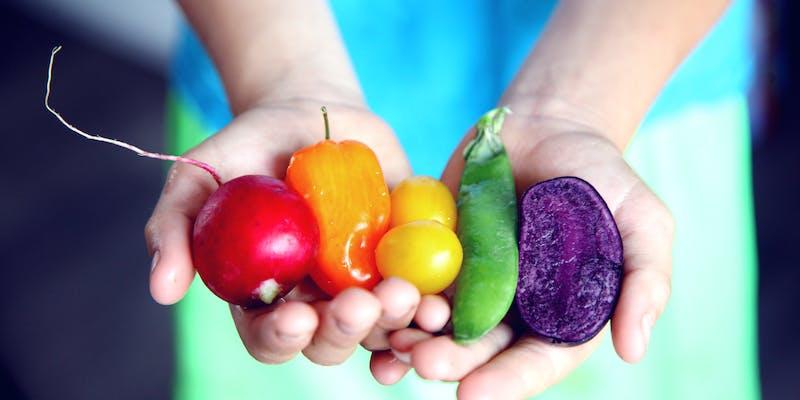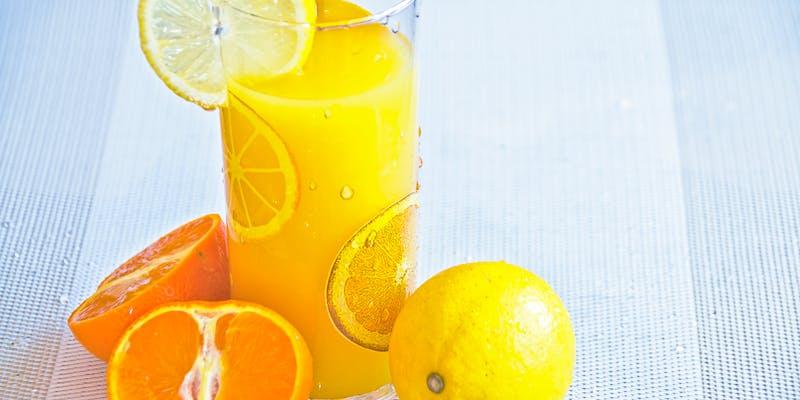Which vitamins are water-soluble and which are fat-soluble?
Feb 20, 2024 By Nancy Miller
Vitamins are a requirement of our body to fulfill its insufficiency of nutrients. These vitamins for teens can ensure growth, health maintenance, eyesight, blood, cholesterol level, and so much more, which is vital for keeping a living organism healthy and alive. In general, the large variety of vitamins is divided into two categories: water and fat-soluble. For proper cell function, improvement, boom, and ordinary fitness, the human frame necessitates 13 important nutrients.
Fat-soluble Vitamins

Vitamins A, D, E, and K are liquid nutrients at room temperature. The fatty tissues help with the essential storage of these nutrients and vitamins for teens. Supplementation with a small amount of dietary fats enhances absorption. Both men and women require these vitamins to ensure a healthy lifestyle. For instance, Vitamin K is imperative for blood clotting; Vitamin A is vital for imaginative prescient and immune features; Vitamin D is indispensable for bone fitness; and Vitamin E functions as an antioxidant. Consuming a balanced food regimen is crucial to obtain enough quantities of these. Ensure to have a healthy meal with all the required constituents for one needs to be as good. All these minerals of either fat vs water soluble vitamins are available in carrots, sweet potatoes, dairy products, sunlight, nuts, seeds, and leafy greens.
Vitamin A
Fat-soluble vitamins, or FAK, include vitamins A, D., E, and K, in which adipose tissues store these fat vs water soluble vitamins. When the fats have also been taken, they become better absorbed. All vitamins, for that matter, are essential to your health. Vitamin A benefits vision and immunity; vitamin D makes bones stronger; vit. В and E act as a source of antioxidants, and the benefit of vit. K – helping blood clot. Ensure to have a healthy meal with all the required constituents for one needs to be as good. All these minerals are available in carrots, sweet potatoes, dairy products, sunlight, nuts, seeds, and leafy greens.
Vitamin E
Free radical neutralization is vitamin E's best-known benefit. Healthy heart muscles and immune systems require it. The tolerable upper intake level should not exceed 15 mg of vitamin E daily for adults. It occurs in sunflower, safflower, and wheat germ oils. Also good are wild and seeds. Delicious sunflower seeds, almonds, hazelnuts, and peanuts contain this vitamin.
Vitamin K
The blood clotting process requires vitamin K to stop bleeding. It is also important for strong bones. Daily 120 micrograms is advised. Inquired where? Good sources include leafy greens. Consider a spinach-broccoli salad. Soybeans, blueberries, figs, meat, cheese, eggs, and cooking oils contain vitamin K. Variety helps you get enough of this vitamin.
Water-Soluble Vitamins

The B vitamins, including riboflavin, niacin, pantothenic acid, and pyridoxine, are Biotin and B 9 for folate/folic acid and C. It no longer accumulates inside the body as vitamin A and exclusive fats-soluble vitamins for teens do. Citrus fruits, whole grains, dairy, green veggies, and meat are proper assets of the diet.
Thiamin (Vitamin B1)
Thiamin is needed to convert food into energy. It's also essential for neuronal function and cellular energy production. The vitamin is found in many foods. Rich in thiamin are whole grains, fortified rice, bread, and cereal. For meat eaters, pork and fish are good sources. Legumes, nuts, and seeds can provide sufficient pleasure for vegans and vegetarians. The recommended daily dose of vitamin B1 for ideal health is 1.2 mg, as experts say.
Vitamin B2
Riboflavin, being Vitamin B2, aids food digestion to energy. Its availability is also very big, which makes it easy to eat. Riboflavin is mainly present in the liver, kidney, and egg yolks. It is also derived from daily nutritional requirements chart low-fat milk and lean meats. In addition to riboflavin, dark green vegetables like spinach, asparagus, and broccoli are nutritious. Fortified cereal and bread provide this vitamin. Daily riboflavin is 1.3 mg.
Vitamin B3
B3, or niacin, helps convert food into energy. The nervous system benefits, too. Beef, pork, and fowl contain niacin. It contains fish, nuts, legumes, grains, fortified cereals, and bread. Daily 16-milligram niacin can keep you healthy.
B5 Vitamin
B5—pantothenic acid—is necessary for energy metabolism and other bodily functions. Another vitamin function is stress response. Various foods contain it.
Steak, chicken, seafood, and organ meats can all be great sources of iron. The vegetarian meals covered dairy, egg, avocado, potato, broccoli, shiitake, and mushrooms. Peanuts, chickpeas, sunflower seeds, and complete grains are observed in this vitamin. The daily advocated cost is 5 mg.
Vitamin B6
Vitamin B6, pyridoxine from the daily nutritional requirements chart, is needed for normal metabolism. Both nerve and red blood cell function and formation require it. B6 can be found in species of poultry, seafood, organ meats, avocados, potatoes, and dry starches; others are starchy vegetables like sweet potato, corn rice, wheat sorghum, barley, rye oats, and non-citrus fruit, including bananas, plantains beans cucumber peppers tomatoes zucchini squash peas support your
Vitamin B7
Biotin, vitamin B7, is necessary for carbohydrate, protein, and fat vs water soluble vitamins conversion to energy. Normal neurological system function and healthy hair and skin are promoted. Good sources of biotin include sweet potatoes, broccoli, spinach, liver, eggs, and organ meats like liver. Everyday biotin is 30 mcg.
Folic Acid
Because it builds the neural tube the baby will use for movement and coordination, folate is essential for all women, especially pregnant and childbearing women. It supports neuron function and food-to-energy conversion. Nuts, dark green leafy vegetables, asparagus, Brussels sprouts, oranges, beans, peas, and beef liver give you folate. DFE should be taken daily at 400 mcg.
Vitamin B12
B12 plays a critical function in red body blood cells and nervous functions. It is a formulation from animal sources according to the daily nutritional requirements chart, and thus, vegetarians and vegans must have it. Such reliable sources include beef liver, clams, fish, chicken, eggs, and milk products, with nutritional yeast being an important additive. Others are cereals and fortified foods. The diet contains 2.4 mcg of vitamin B12 every day.
Vitamin C
One more antioxidant called vitamin C—ascorbic acid- is water soluble. The absorption of iron and the production of collagen, along with healthy skin, greatly depend on it. Foods that comprise high amounts of C vitamins for teens include cantaloupe, kiwifruit, pink, green, and yellow peppers, strawberries, broccoli, and baked potatoes. Taking 90 mg in step with the day is recommended to benefit completely from its advantages.







